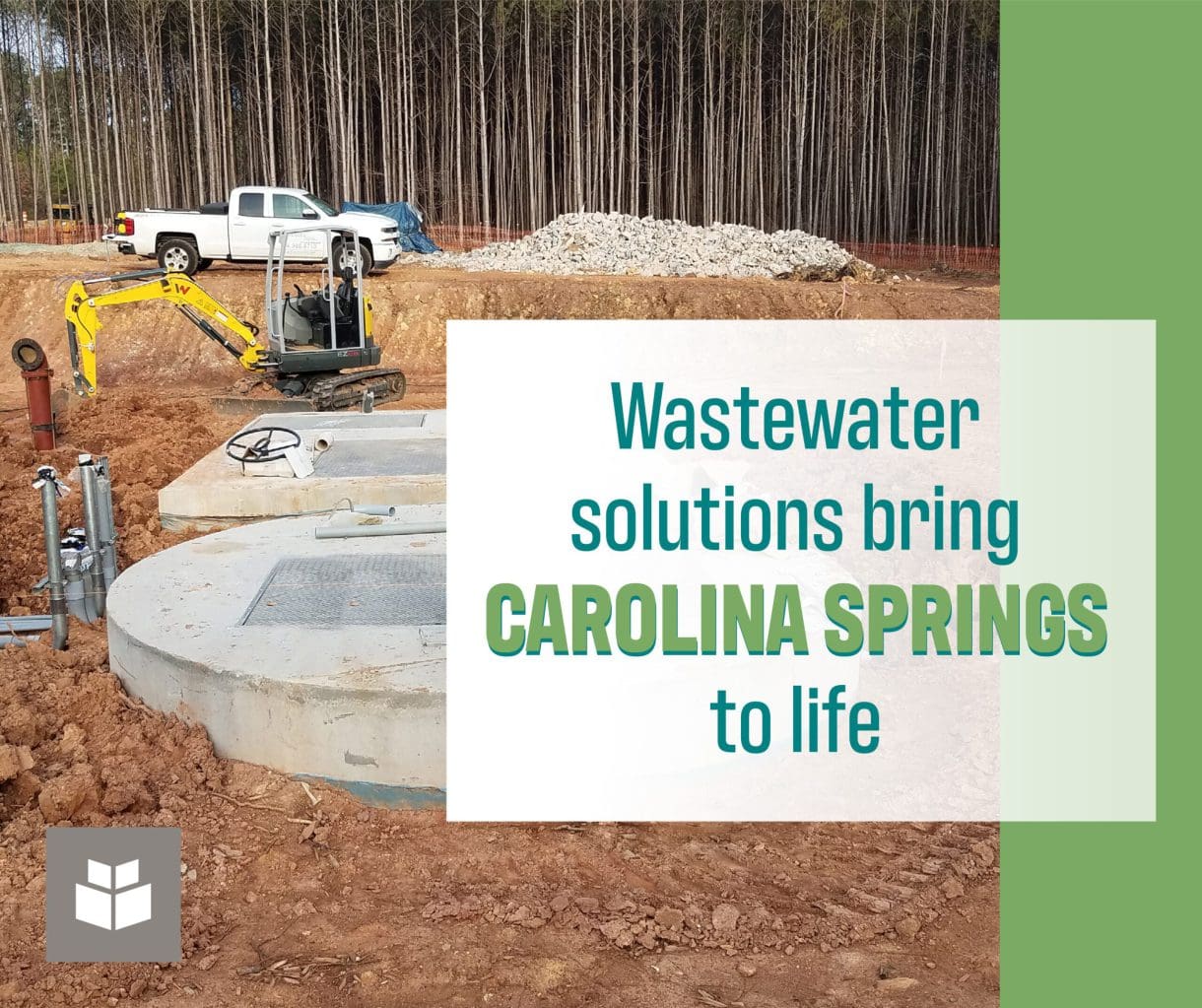
When it comes to building a new home, homebuyers spend a lot of time thinking about the perfect location, finishes, and amenities but often very little time thinking about the underground utilities that serve that home, especially the sewer. But without an adequate connection to municipal sewer service the locations and density of new neighborhoods are limited.
At WithersRavenel, we spend a lot of time thinking about sewer. In fact, we recently helped a client solve a sewer connection challenge by installing a 20,000-foot or 3.7-mile connection between the new neighborhood and the central wastewater treatment plant.
About Carolina Springs
Carolina Springs is a mixed-use Planned Unit Development (PUD) located in the Town of Holly Springs on land that was formerly owned by Duke Energy. When built out, the project will have approximately 1,400 residential units and up to 1,000,000 square feet of non-residential uses.
For Carolina Springs to be a viable development, one primary sewage pump station (Carolina Springs Pump Station) and one secondary sewage pump station (Woods Creek Road Elementary School Pump Station) are required to convey the wastewater to the wastewater treatment facility.
The Challenge
Covering that amount of distance with a sewer line presents a series of challenges. Some of the challenges on this project include terrain, easements, and crossings.
Terrain
The main force acting on wastewater is gravity: sewage will naturally flow to the lowest point in the system. This is why most wastewater treatment plants are located at a lower elevation relative to the areas they serve.
If the route for the planned sewer line doesn’t flow downhill, a pump station and force main can be designed. The pump station will be installed at the lowest point in the line between the neighborhood and the wastewater treatment plant. If there is a peakin elevation between the pump station and the treatment plant, then the pressurized portion of the system—the force main—will only travel between the pump station and the peak. After the peak, the sewage will flow by gravity down to the plant. If there is no peak between the pump station and the plant, the force main will travel all the way from the pump station to the plant.
Easements
If the land that the sewer line needs to travel through isn’t owned by the developer, a series of easements will need to be negotiated and paid for. An easement is a legal right to use a piece of land for a specific purpose without owning the land. For this project the client needed to negotiate with several other landowners for the easement to run a sewer line through their property.
Planning a route that minimizes the need to acquire easements can reduce the cost and complexity of a project.
Crossings
When traveling over three and a half miles, a sewer line is likely to cross the path of at least one of several other types of natural and manmade features.
For this project we handled safe crossings of streams, a high-pressure natural gas line, existing neighborhoods with streets and utilities, and a high-voltage electrical transmission line.
The Solution
This project is a great example of where our Utilities Practice area works for an internal client, the Land Development Group. To safely and effectively complete this work, we also utilized several other practice areas and services:
- Our Geomatics Group surveyed the route
- Our Subsurface Utility Exploration Group located the existing utilities along the path
If you have questions about an existing or potential wastewater or other utility project, please reach out to Dave McClure at (919) 535-5145 or dmcclure@withersravenel.com.
